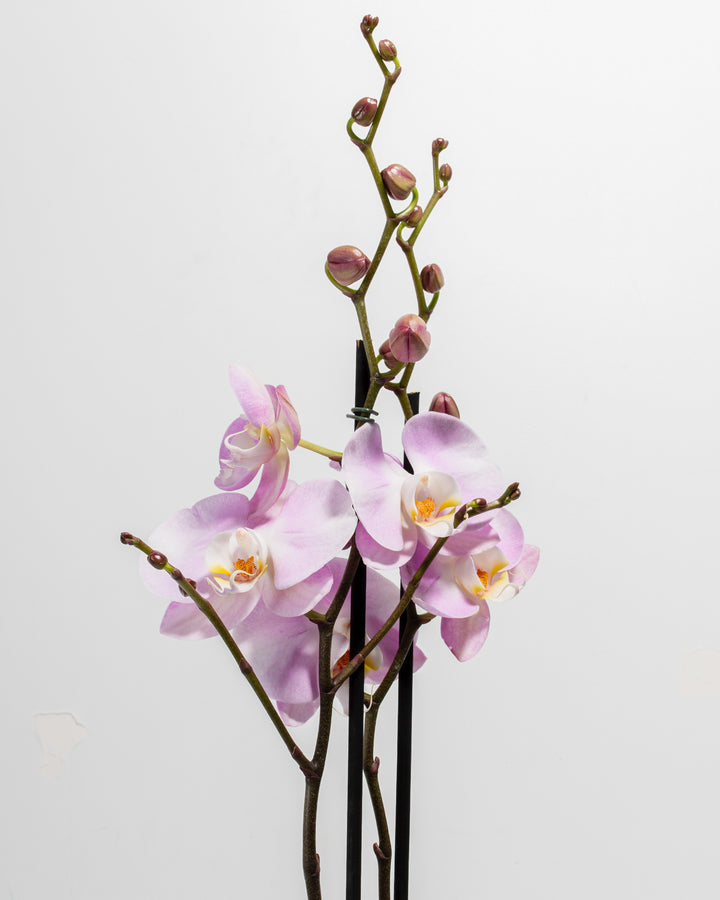Welcome
You have points
Recently viewed
Wishlist
Sign in to access your favorites

The Pink Phalaenopsis Orchid (Phalaenopsis spp.), or Moth Orchid, is a popular flowering plant know for its elegant, long-lasting pink blooms that range from soft pastel to deep magenta. Native to Southeast Asia and Australia, it thrives in bright, indirect light, moderate watering, and high humidity (50% - 70%), making it well-suited for indoor and outdoor cultivation, especially in USDA zones 10-12. This orchid symbolizes grace, femininity, and admiration, making it a thoughtful plant gift for special occasions. Unlike many housplants, it is non-toxic to pets, ensuring a safe choice for cat and dog owners. You can explore other Orchid varieties, such as the Arcadia Moth Orchid, Miraflore Moth Orchid, Red Lip Moth Orchid, and White Moth Orchid.
The Pink Moth Orchid is a low-maintenance yet stunning tropical plant, ideal for beginners and experienced growers alike. With proper care, including the right balance of light, water, and humidity, it will reward you with beautiful, long-lasting blooms.
This orchid thrives in bright, indirect light; place it near an east- or north-facing window. Avoid direct sun, as it can scorch the leaves. Ideal temperatures range between 60-85°F, with nighttime drops encouraging blooming. Keep it away from cold drafts and heat sources like radiators or vents.
Water your Pink Moth Orchid weekly, allowing excess water to drain completely. Use room-temperature, filtered, or distilled water to prevent mineral buildup. It prefers high humidity (50-70%), so consider using a humidity tray, misting occasionally, or placing it in a naturally humid space like a bathroom.
A well-draining orchid mix, typically made of bark, sphagnum moss, and perlite, is essential for healthy roots. Repot your orchid every 1-2 years, preferably after flowering, to refresh the growing medium and prevent root rot. Choose a clear pot with drainage holes to monitor root health.
Fertilize with a balanced orchid fertilizer (20-20-20) at half strength every 2-4 weeks during active growth. Reduce feeding in winter. Propagation is typically done through keikis (baby orchids) that sprout from the flower spike once they develop strong roots; they can be carefully separated and repotted.
Yellowing leaves often indicate overwatering, while wrinkled leaves suggest underwatering or low humidity. If buds drop before blooming, it may be due to temperature fluctuations or insufficient light. Watch for pests like mealybugs and scale, treating infestations with insecticidal soap or neem oil.
Orchids are pet-safe beauties with showy flowers that captivate any onlooker. But when blooms begin to fade, there’s no need to worry, our handy Orchid Subscription option. It ensures you’ll always have a fresh, flowering orchid in your home. You will receive a new orchid variety in a stylish Eco Pot every 3 or 6 months.
Pairing your Pink Orchid flower with the right companion plants enhances its beauty while creating a thriving indoor environment.
If you love the Pink Orchid but want to explore other stunning options, consider these beautiful alternatives.
Ready to add a touch of elegance to your home? Buy your Pink Phalaenopsis Orchid from Lively Root and enjoy its stunning blooms all year round!
Follow us @livelyroot & show us your #livelyroot plants

